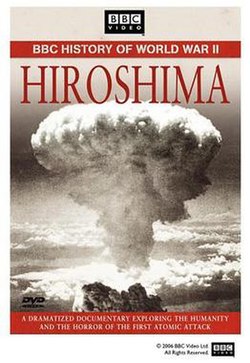This article needs additional citations for verification .(January 2009) |
| Hiroshima: BBC History of World War II | |
|---|---|
 DVD cover art | |
| Genre | Documentary History Military |
| Written by | Paul Wilmshurst |
| Directed by | Paul Wilmshurst [1] |
| Narrated by | John Hurt [1] |
| Theme music composer | Daniel Pemberton [1] |
| Country of origin | United Kingdom |
| Original language | English |
| Production | |
| Producer | Paul Wilmshurst |
| Editors | Luke Dunkley Horacio Queiro [1] |
| Running time | 89 minutes [2] |
| Original release | |
| Network | BBC One BBC America Discovery Channel |
| Release | 5 August 2005 |
Hiroshima is a BBC docudrama that premiered as a television special on 5 August 2005, marking the eve of the 60th anniversary of the atomic bombing of Hiroshima. [1] The programme was aired on the Discovery Channel and BBC America in the United States. The documentary features historical reenactments using firsthand eyewitness accounts and computer-generated imagery of the explosion. The film won an Emmy and three BAFTA awards in 2006. [3]